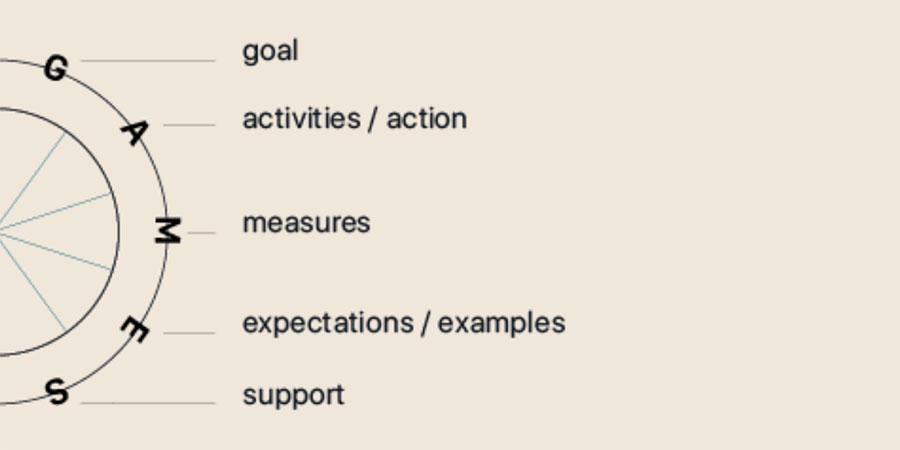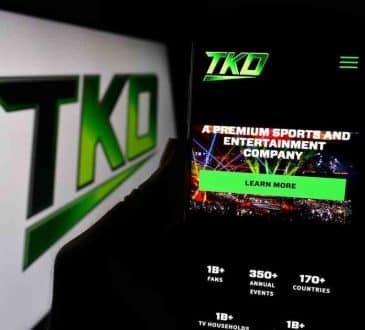GAMES: The Quest for Zero Percent Management

With all the management tools and theories available, you’d think we’d have management down to an exact science. Unfortunately, that’s not the case. The largest Gallup survey of employee engagement showed that 87 percent of staff are not engaged, which, needless to say, is a huge drain on productivity. The number one reason staff gave? You guessed it: the manager.
I once worked with a CEO who said, “I have a dream where management is no longer needed.” By his way of thinking, if his employees’ team ethos was solid and true—meaning that everyone knows why they’re doing what they’re doing, how to do it, and who to involve—there would be no need for managers to oversee their progress.
I fell in love with this idea because it struck at a core question that every organization needs to consider: what is a manager for? Accountability? To check our work? Or to develop us, challenge us, and help us find out how we can become a little better every day?
My vote is for the latter. The goal of any organization is to get people into what the psychologist Mihaly Csikszentmihalyi refers to as a state of flow, so they can do good, meaningful work. When people are in flow, time falls away; they lose themselves in work and become very productive.
The best way to get your organization into flow—and move away from the accountability model of management—is to use a management system built on games to rethink the role of managers entirely. Set your sights on 0 percent management.
Introduction to the Games Management System
Before I explain what the games management system is, I want to take a moment to explain what it isn’t. I’m not talking about the fad of gamification, where every task becomes part of some virtual “work” video game. The games system isn’t about hiding work behind some false veneer of fun; it’s about engaging the innate human drive to learn through practical games. That’s the best and fastest way to wake up a person’s intrinsic motivation, get them into a flow state, and encourage them to bring their best out at work.
In the game management system, teams of individual players come together to co-design games. Each game is composed of five parts (helpfully summed up by the acronym “GAMES”). As teams collaborate to co-create their games, they should document each element in a brief, one-page asset. This asset guides how players operate on a day-to-day basis. (Please note, if you’re already using OKrs, 4DX, agile scrum, or Hoshin Kanri, you can still incorporate games to create consensus throughout your organization.)
In the GAMES management system, G stands for goals. In order to create a game, teams first need to collaborate to set a goal in the “Goldilocks zone” (not too easy, not too hard.) Maybe this goal is a specific deliverable in a short time frame or a sales goal. Whatever it is, it should be aligned with the company’s North Star goal, which encapsulates the organization’s overarching values. When goals are aligned at every level of the organization, everyone will feel like they’re contributing to something larger than themselves.
A stands for actions and activities. Teams should choose the highest-impact activities that will help them reach their goal. (In other words, the 20 percent of options that will likely deliver 80 percent of their desired results.)
M stands for measures. These measures should qualify and quantify the results in a clear way that makes progress visible. Hang whiteboards or charts around the workspace, the same way sports arenas keep scoreboards to mark progress throughout any given game. Feedback is a requirement for flow, and visible progress measurements allow players to see themselves moving incrementally towards their goal. In turn, that feeds iteration and the ability to improve in the moment.
E stands for expectations and examples. For the game to function, it must have clear rules; these are the expectations. Teams should be clear about the expectations for each individual player and the rules guiding the team’s actions. Examples are equally important, because they help the team set standards. Who are the role models you’re looking to for guidance? How have you seen the game played before, and how can you model and learn from it?
S stands for the support that is available to guide the rhythm of the game. This is where managers become important. But instead of managers, think of them as coaches who are there to provide a fast feedback loop to help improve day by day. In the quest for 0 percent management, this final piece—support—is critical.
The Best Managers are Coaches
In the world of games, the manager’s role isn’t to oversee. It’s to make coaching and support readily available so you can help each player in the rhythm of the game. You may be able to attain 0 percent old-school management, but your organization will always need coaches.
Why? Because no matter how clear your game is, everyone could do with a little help in learning how to play it better. The coach’s job is to curate the environment that allows people to co-create and help structure the game, and along the way to clear the blocks and enable the players to succeed.
The goal of any game is to create a rhythm that allows each person to get a little better each day, and coaches offer daily, reliable feedback to help players consistently improve. Great coaches ask great questions. They show the way forward and help their people play a better game. They’re not an auxiliary function of command and control. Instead, they become players in their own right. They have their own games to build and play, and they’re a critical component of producing results.
Coaches are also role models for good discipline, given that the games management system requires a certain level of discipline and accountability. Once the rules of the game are established, players have to feel the intrinsic motivation to keep playing. Coaches play a strategic role in running a good practice, and they support the team throughout the course of play.
The biggest resistance I experience when I introduce this concept to organizations is the idea that work must be serious, while games must be fun. According to genius of Swiss genetic epistemologist Jean Piaget, humans are all designed to play, we are game playing mammals, We’re wired to be collaborative game-players, solving problems and finding better solutions. Play is not frivolous; it’s a fundamental form of human development.
Ultimately, the goal of games is to teach people how to think. The best coaches don’t just teach their players how to play a specific game. They teach them how to create their own games. As players play more, their games become more complex, and more complex games develop higher-level thinking skills. When we’re winning together, we not only feel more effective, but we also feel more alive. That’s what drives people to achieve more.
What Game is Your Team Really Playing?
My friend John Bell, an ex-chief engineer for Toyota, once told me, “Everywhere I go, I see a lot of managers. I just don’t see a lot of management.” What he meant was that most managers play the role of overseer instead of coach. They’re more concerned with being taskmasters than developing task mastery, and they so rarely make the progress of their teams clear and visible, the very thing that keeps us in fast feedback and flow.
The secret of truly good management is being a coach, providing necessary support, and creating a learning environment where the seemingly mundane can be linked to a more exciting and meaningful purpose. That’s how you guide people to flow state and create focus, engagement, and communication.
As you embark on your quest for 0 percent management, ask yourself: What game is your team really playing? How clear are you on your goals, activities, measures, expectations, and support? And what could you be doing differently to help your employees see progress so they can get better and better, faster and faster?
Written by Benny Ausmus. Have you read?
Best Hospitality And Hotel Management Schools In The World For 2021.
Best Fashion Schools In The World For 2021.
Best Business Schools In The World For 2021.
Best Medical Schools In The World For 2021.
Follow CEOWORLD magazine on Facebook, Twitter, Instagram, and LinkedIn.
Add CEOWORLD magazine to your Google News feed.
Follow CEOWORLD magazine headlines on: Google News, LinkedIn, Twitter, and Facebook.
This report/news/ranking/statistics has been prepared only for general guidance on matters of interest and does not constitute professional advice. You should not act upon the information contained in this publication without obtaining specific professional advice. No representation or warranty (express or implied) is given as to the accuracy or completeness of the information contained in this publication, and, to the extent permitted by law, CEOWORLD magazine does not accept or assume any liability, responsibility or duty of care for any consequences of you or anyone else acting, or refraining to act, in reliance on the information contained in this publication or for any decision based on it.
Copyright 2024 The CEOWORLD magazine. All rights reserved. This material (and any extract from it) must not be copied, redistributed or placed on any website, without CEOWORLD magazine' prior written consent. For media queries, please contact: info@ceoworld.biz
SUBSCRIBE NEWSLETTER









